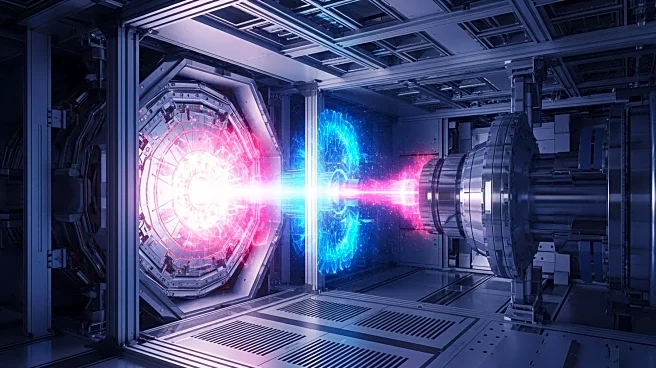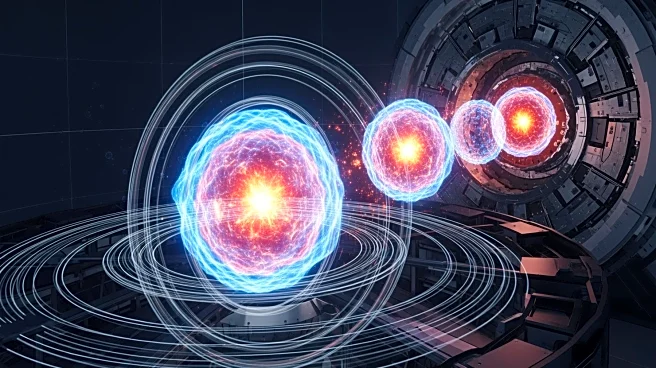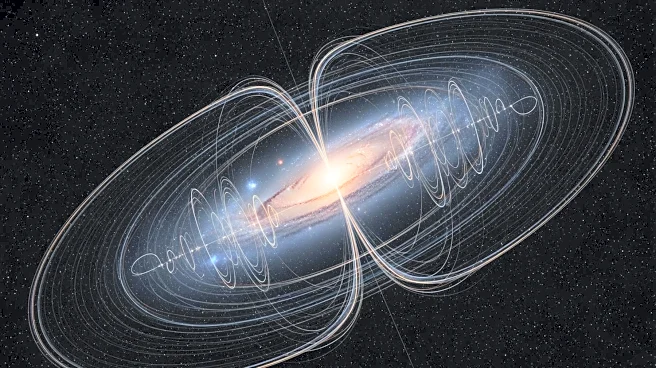What's Happening?
Researchers at CERN have successfully generated plasma 'fireballs' using the Super Proton Synchrotron accelerator to study the stability of plasma jets from distant blazars. These experiments aim to solve
the mystery of the universe's missing gamma rays and its vast, invisible magnetic fields. Blazars, powered by supermassive black holes, emit powerful jets of particles and radiation, including gamma rays. As these gamma rays travel through space, they interact with background light, producing electron-positron pairs that should create lower-energy gamma rays. However, this expected signal has not been observed, leading scientists to explore the role of weak magnetic fields and plasma instabilities in this discrepancy.
Why It's Important?
The research could provide crucial insights into the universe's magnetic fields and the behavior of cosmic jets, which are essential for understanding the structure and evolution of galaxies. By recreating cosmic conditions in the laboratory, scientists can test theories about the high-energy universe and the origin of magnetic fields in intergalactic space. The findings may also have implications for our understanding of fundamental physics and the processes that shape cosmic phenomena. The study highlights the importance of collaboration between experimental facilities and the potential for laboratory astrophysics to bridge the gap between theory and observation.
What's Next?
Future research will focus on exploring the implications of the findings for the early universe and the origin of magnetism. Observatories like the Cherenkov Telescope Array Observatory are expected to provide sharper data to further investigate these theories. Scientists may also conduct additional experiments to test the strength of plasma instabilities and their impact on cosmic jets. The study opens new avenues for understanding the universe's magnetic fields and their role in shaping cosmic structures.
Beyond the Headlines
The research raises questions about the nature of cosmic magnetism and the processes that generate it. It underscores the importance of interdisciplinary collaboration and the role of laboratory experiments in advancing our understanding of the universe. The findings also highlight the potential for new discoveries to challenge existing theories and inspire further exploration of cosmic phenomena.











